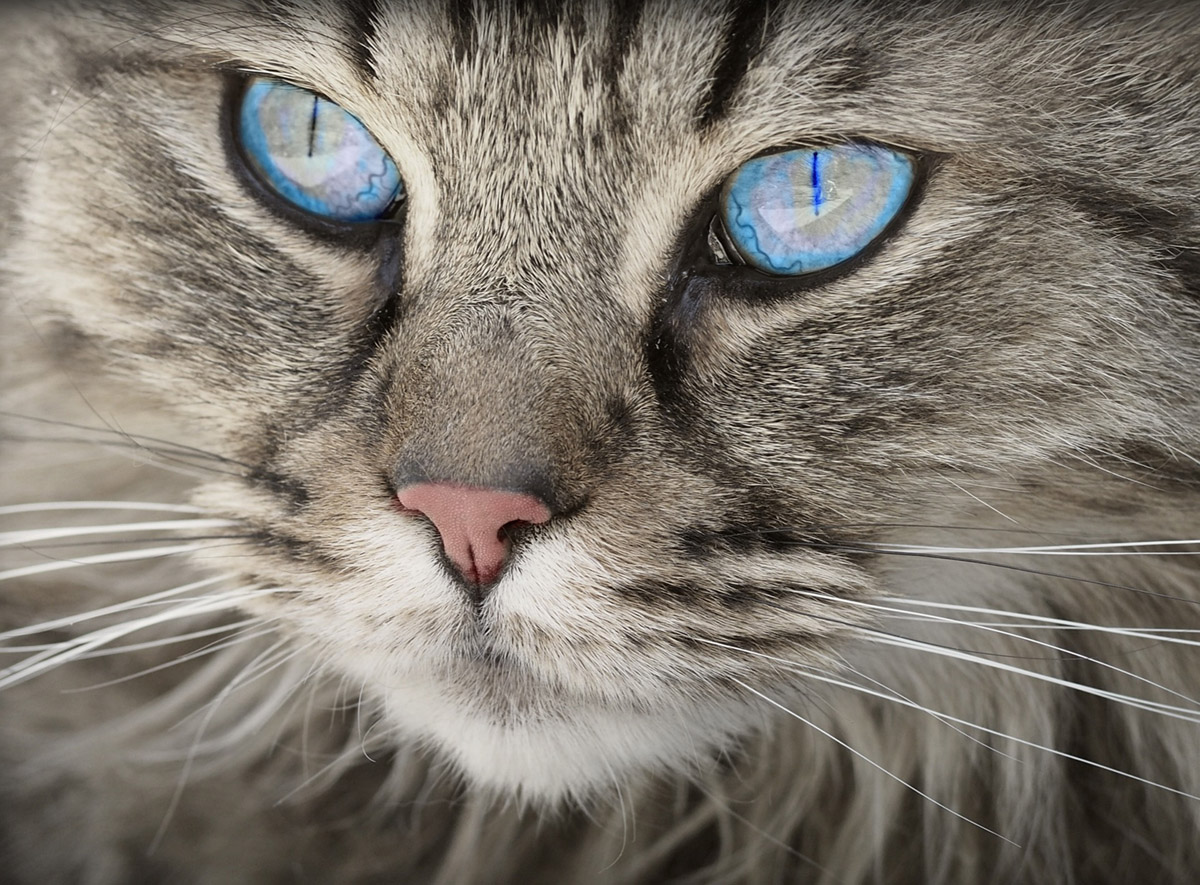
Story by Sydney Pearce, a U of G student writer with Students Promoting Awareness of Research Knowledge (SPARK)
Some cat owners, including University of Guelph researcher Georgia Mason, believe they can read their pet’s mood by looking at its face.
Now, she’s putting that idea to the test with a research project that aims to find out if people can identify feline emotions through a cat’s facial expressions.
“I developed the idea from my conviction — right or wrong — that I can tell when my own cats are happy,” says Mason, a professor in the University of Guelph’s Department of Animal Biosciences. “I think many cat owners share this feeling.”
Mason, along with postdocs Jenna Cheal and Lauren Dawson, and population medicine professor Lee Niel, has created an online survey to explore people’s abilities to detect positive and negative emotions in cats. The survey involves participants watching short video clips of close-up cat faces taken from various positive and negative situations. After watching the videos, participants will then be asked if they think the cat is feeling positive or negative emotions. The results will be compiled to determine the accuracy of participants.
The researchers say that understanding feline facial cues can help owners and veterinary staff better manage cats’ health and welfare.
Previous research has shown that cats are taken to the vet less often than dogs, and are handled differently during appointments. If a cat’s facial expressions can be interpreted more accurately, veterinary staff and pet owners may be able to better understand a cat’s needs and preferences in the clinic and at home.
“People are experts at processing facial expressions in one another, so it’s possible we can use that ability to process faces of other species such as cats, as well,” says Cheal.
To determine if the videos show positive or negative emotion, researchers considered whether the cat was approaching or avoiding the situation (for example, approaching a treat); in a health state that is known to be negative based on veterinary reports (for example, pain or discomfort due to disease or injury); or showing other behavioural signs of a positive or negative emotion (for example, fear-related behaviours such as pointing ears back). For inclusion, the research team had to be in agreement based on their extensive animal behaviour and welfare backgrounds.
Audio and visual signals that might indicate an emotion, such as hissing, have been removed from the video clips to avoid influencing participants’ decisions. The videos are zoomed in to focus solely on the cat’s face.
In an initial pilot study, participants got more than half the facial expressions correct, a promising sign for the current study. Results also showed some people were much better than others at recognizing feline emotions.
Niel says this research could be a good start for many future projects aimed at developing tools for assessing welfare in cats. It could also help with marketing pet products such as cat food. If a friendly, more appealing face is identified, pet food companies can incorporate those images into their advertising and packaging.
Says Cheal: “There is little research on cats, even though they are a huge part of so many people’s lives. I think this is a good step towards knowing our companions better.”